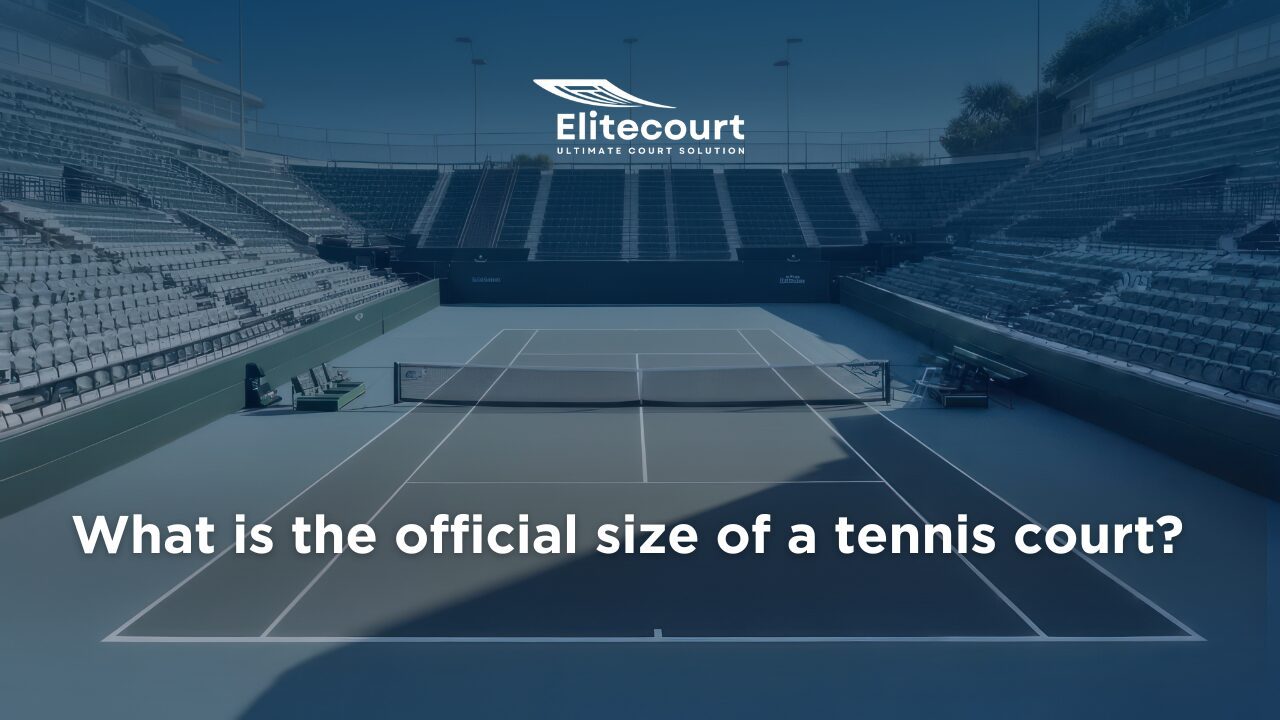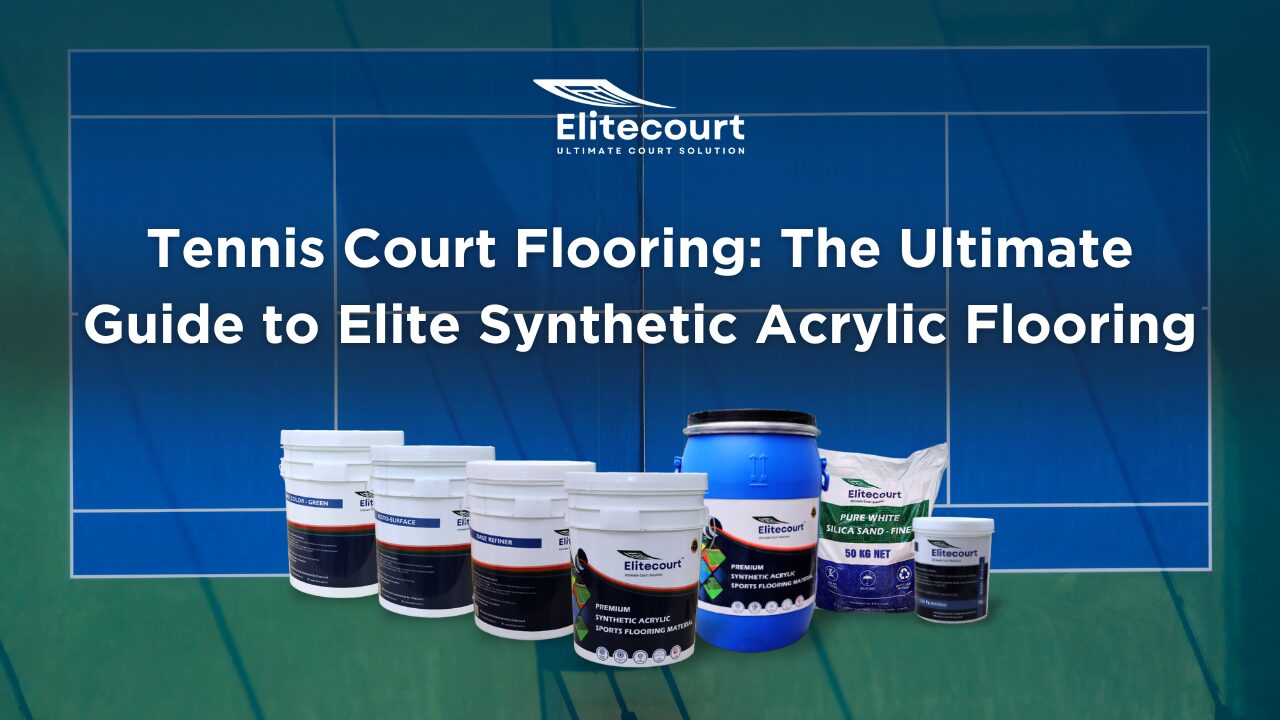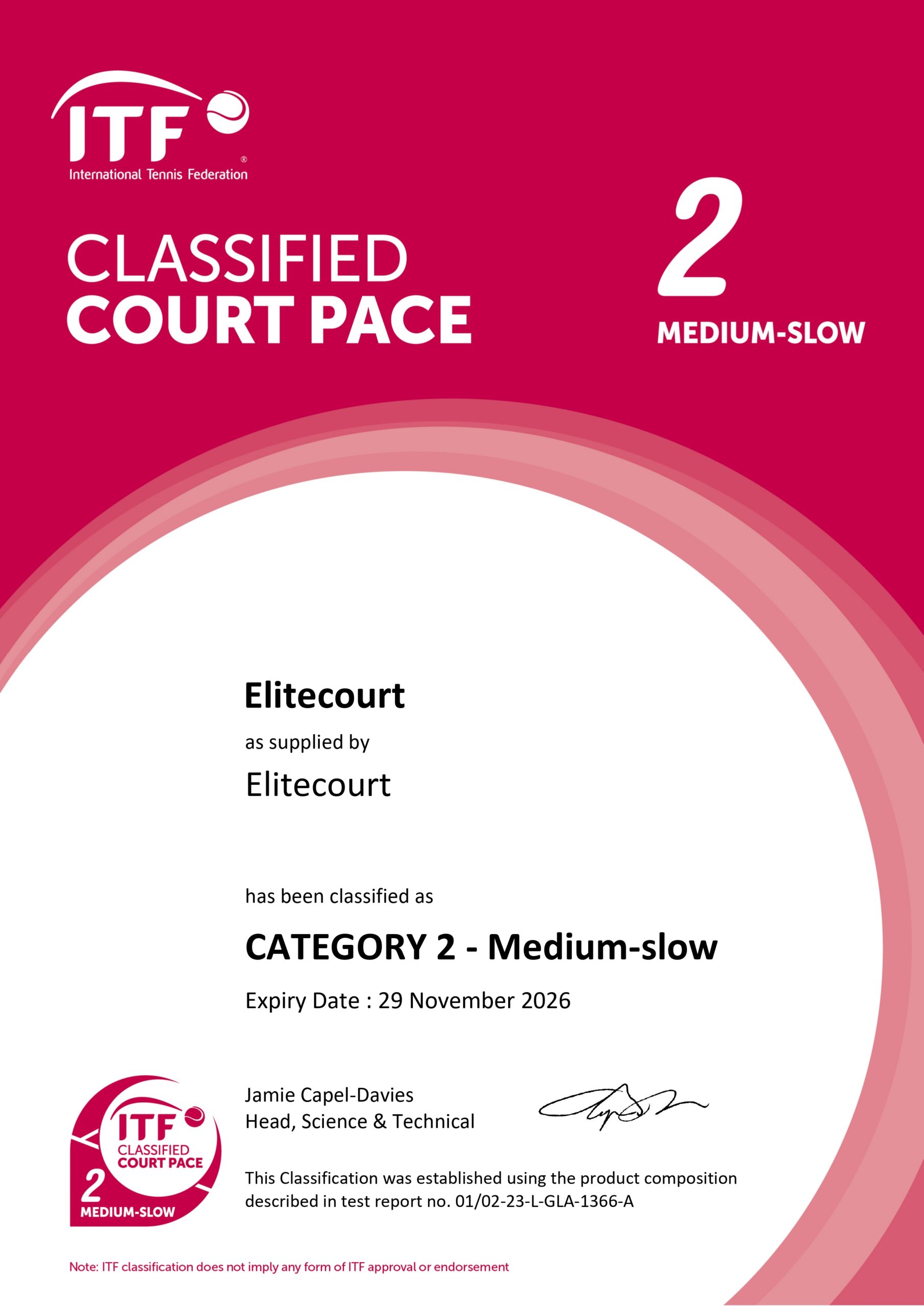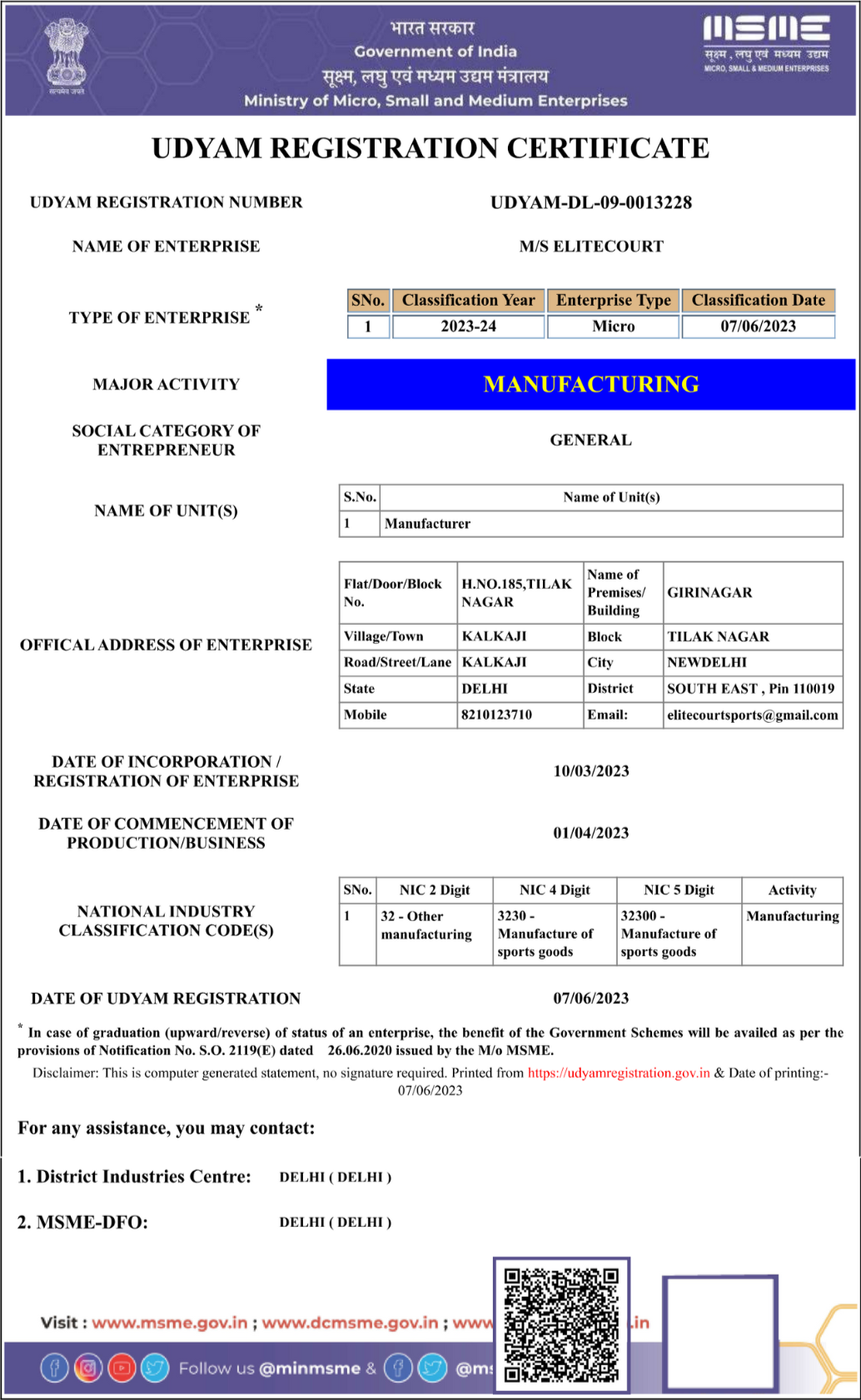Acrylic Concrete and Synthetic Tennis Court Construction in India
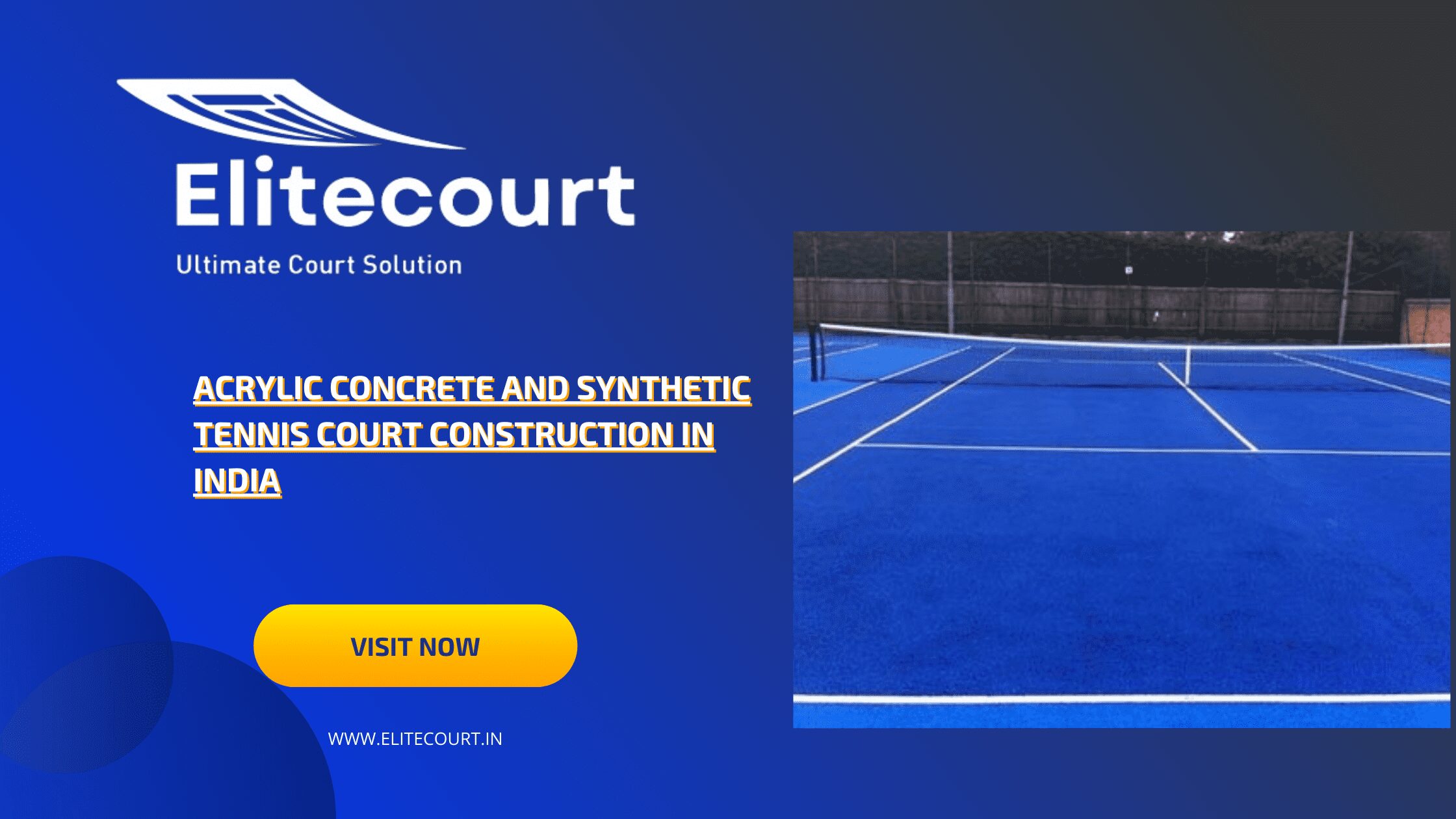
Table of Contents
Introduction
Tennis is not just a sport but an experience, and the quality of the court significantly impacts this experience. In India, where tennis is growing in popularity, choosing the right surface for tennis court construction is crucial. Acrylic concrete and synthetic tennis courts are two popular options, each offering unique advantages. This article explores these options and provides a comprehensive guide to constructing high-quality tennis courts in India.

Types of Tennis Court Surfaces
Acrylic Concrete Courts
Acrylic concrete surfaces are made from a mixture of acrylic resins and concrete. This type of surface is known for its durability and smooth playing experience. It is often used for both recreational and professional courts.
Synthetic Tennis Courts
Synthetic courts use artificial materials, typically involving layers of synthetic fibers and rubber. These surfaces offer versatility and can mimic the feel of natural grass, clay, or hard courts.
Comparisons and Uses
Acrylic concrete is known for its durability and consistency, making it a popular choice for high-traffic areas. Synthetic surfaces are preferred for their flexibility and ability to replicate different playing conditions, making them suitable for varied climates and user preferences.
Acrylic Concrete Tennis Courts
Definition and Composition
Acrylic concrete courts consist of a base layer of concrete topped with an acrylic coating. This coating provides a smooth, durable surface that can withstand heavy use and varying weather conditions.
Benefits of Acrylic Concrete Courts
- Durability: Long-lasting and resistant to wear and tear.
- Low Maintenance: Requires minimal upkeep compared to other surfaces.
- Consistent Play: Provides a reliable and uniform playing experience.
Ideal Conditions for Acrylic Courts
Acrylic concrete courts perform best in moderate climates. They can be affected by extreme temperatures and humidity, so proper installation and maintenance are essential.
Synthetic Tennis Courts
Definition and Types of Synthetic Surfaces
Synthetic tennis courts are made from a variety of materials, including artificial grass, rubber, and other synthetic fibers. They are designed to replicate the characteristics of natural surfaces or provide a unique playing experience.
Benefits of Synthetic Courts
- Versatility: Can mimic different types of natural surfaces.
- Comfort: Often provides better shock absorption and player comfort.
- Weather Resistance: Performs well in various weather conditions.
Common Applications
Synthetic courts are used in diverse environments, including schools, community centers, and professional venues. Their adaptability makes them suitable for different playing conditions and climates.
Construction Process for Acrylic Concrete Courts
Site Preparation
Proper site preparation involves clearing the area, grading the surface, and ensuring proper drainage. This step is crucial for the longevity and performance of the court.
Base Installation
A solid concrete base is laid, providing a stable foundation for the acrylic coating. The base must be leveled and cured properly to ensure a smooth final surface.
Surface Application
The acrylic coating is applied in multiple layers, including a primer, a textured layer, and a final finish. Each layer must be allowed to cure before the next one is applied.
Final Touches and Maintenance
After the surface is fully cured, final touches such as line markings and net installation are completed. Regular maintenance involves cleaning and checking for surface wear.
Construction Process for Synthetic Courts
Site Preparation
Similar to acrylic courts, site preparation for synthetic courts involves clearing, grading, and ensuring proper drainage.
Base Layer Installation
A base layer of crushed stone or gravel is installed to provide stability. This is followed by a layer of shock-absorbent material if required.
Synthetic Surface Application
The synthetic surface is laid over the base layer. This may involve stitching, gluing, or other methods depending on the type of synthetic material used.
Quality Checks and Maintenance
Quality checks ensure that the surface is installed correctly and meets performance standards. Regular maintenance includes cleaning and inspecting for damage.
Choosing Between Acrylic Concrete and Synthetic Surfaces
Factors to Consider
When choosing between acrylic concrete and synthetic surfaces, consider factors such as climate, budget, and intended use. Acrylic surfaces are durable and low-maintenance, while synthetic surfaces offer versatility and comfort.
Cost Analysis
Acrylic concrete courts generally have a lower initial cost compared to synthetic courts. However, synthetic surfaces may offer better long-term value due to their adaptability and lower maintenance requirements.
Longevity and Maintenance
Acrylic concrete surfaces are known for their durability and require less frequent maintenance. Synthetic surfaces may need more regular upkeep but can provide a more customized playing experience.
Challenges in Tennis Court Construction in India
Climate Considerations
India’s diverse climate can impact the choice of surface. Acrylic concrete may struggle in extreme temperatures, while synthetic surfaces can offer better adaptability to varying weather conditions.
Soil and Terrain Variations
Different soil types and terrains require specific construction techniques to ensure stability and proper drainage.
Local Regulations and Standards
Adhering to local building codes and standards is essential for compliance and quality assurance.
Case Studies and Examples
Successful Installations in India
Numerous successful installations of acrylic concrete and synthetic courts have been carried out in India, showcasing the effectiveness and popularity of these surfaces.
Feedback from Facility Managers and Players
Feedback from users often highlights the benefits of each surface type, including performance, maintenance, and overall satisfaction.
Future Trends in Tennis Court Construction
Innovations in Materials and Techniques
The future of tennis court construction includes advancements in materials and techniques, aiming for improved performance and sustainability.
Sustainability in Construction Practices
There is a growing focus on eco-friendly construction practices and materials, which will likely influence future tennis court projects.
How to Select a Reliable Contractor
Key Qualifications to Look For
When selecting a contractor, look for experience, reputation, and expertise in tennis court construction. A reliable contractor will provide high-quality workmanship and adhere to industry standards.
Importance of Experience and Reputation
Choosing a contractor with a proven track record ensures that your project will be completed to a high standard and within the agreed timeframe.
Cost Considerations
Budgeting for Construction
Plan your budget carefully, considering both initial construction costs and long-term maintenance. Obtaining detailed quotes from contractors will help in making informed decisions.
Additional Costs to Consider
Additional costs may include site preparation, drainage solutions, and ongoing maintenance. Be sure to account for these in your overall budget.
Maintaining Your Tennis Court
Regular Maintenance Tips
Routine maintenance includes cleaning, inspecting for damage, and addressing any issues promptly to prolong the life of the court.
Dealing with Common Issues
Common issues such as surface wear or drainage problems can be managed with regular maintenance and timely repairs.
Conclusion
Choosing the right surface for your tennis court is crucial for ensuring a high-quality playing experience. Acrylic concrete and synthetic surfaces each offer unique benefits and considerations. By understanding the construction processes, benefits, and maintenance requirements, you can make an informed decision that meets your needs and budget. Investing in a well-constructed and maintained tennis court will enhance the enjoyment and performance for players and ensure long-term satisfaction. Read More
FAQs
What are the main differences between acrylic concrete and synthetic tennis courts?
Acrylic concrete courts offer durability and low maintenance, while synthetic courts provide versatility and comfort, mimicking various natural surfaces.
How long does the construction of a tennis court typically take?
Construction time varies depending on the surface type and site conditions but generally ranges from a few weeks to several months.
Are there any specific maintenance requirements for these surfaces?
Acrylic concrete surfaces require regular cleaning and inspection, while synthetic surfaces need routine maintenance to address wear and ensure performance.
What is the average cost of constructing a tennis court in India?
Costs vary based on surface type, site conditions, and contractor rates. It’s best to obtain detailed quotes for an accurate estimate.
Can these courts be used for other sports?
Yes, both acrylic concrete and synthetic courts can be adapted for other sports, depending on the surface type and design.

